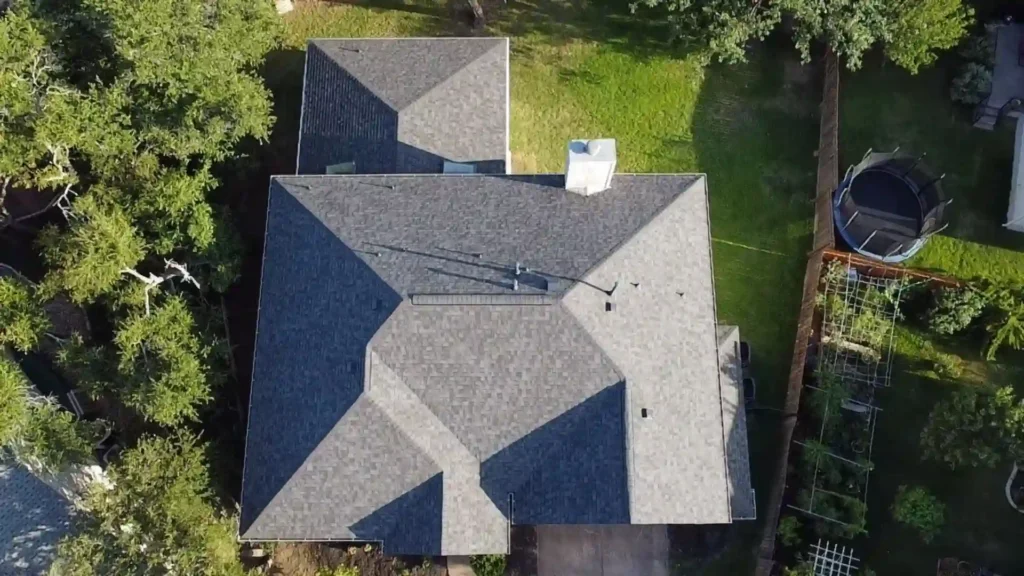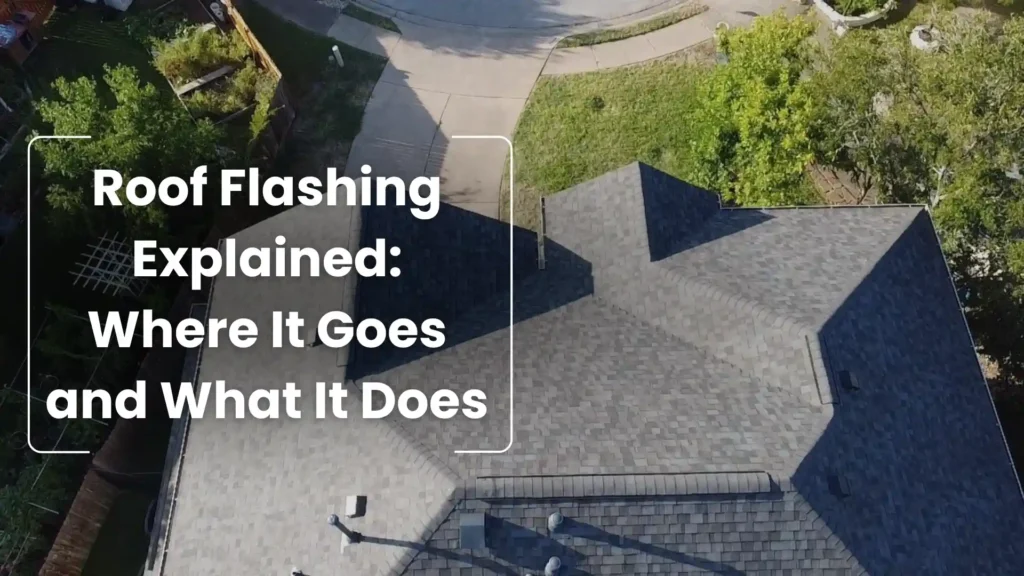Roof Flashing Explained: Where It Goes and What It Does

You may not get excited about selecting the correct shingle or understanding the uses of roof flashing, but roofing professionals do. Although roof flashing may not be the flashiest part of your home’s new roof, proper flashing selection and installation are essential to protecting your home and helping your roof last.
At RoofsOnly.com, our seasoned roofing professionals understand how the quality and application of all roofing materials contribute to protecting your home from the elements. They work together to extend the life of your home’s roof. While flashing doesn’t always get the credit it deserves, understanding where it goes and what it does can help you make the right roofing material choices.
What Is Roof Flashing and Why Is It Important?
Roof flashing is a vital component of a home roofing system that helps prevent water leaks by directing water away from vulnerable areas of the roof. Most flashing is made from metal, such as aluminum, galvanized steel, or copper. Roofers install it around roof features where the roof surface meets vertical elements or changes direction.
Flashing is essential because it is thin and water-resistant. It creates a barrier at joints and intersections where water can seep through and damage the roof or underlying structures. By preventing water intrusion, it protects seams and joints where shingles alone cannot provide a watertight seal.
Roofers generally install flashing in places such as:
- Chimneys
- Around edges or walls
- Skylights
- Roof valleys
- Dormers
- Vent pipes
Roofers may use several types of flashing, depending on the nature of the job. Step flashing is more appropriate when the roof meets a wall or the chimney, while boot flashing is better suited for surrounding vent pipes.
How Roof Flashing Works
The job of roof flashing is simple. It redirects water away from the most vulnerable roof areas, such as chimneys, skylights, and roof edges, preventing water from seeping into a home. Without flashing, water can leak through vulnerable seams, causing issues with mold and rot. These can degrade the quality of a roof over time and lead to water damage in a home’s interior.
The most vital functions of properly installed flashing material include:
- Creating a Watertight Barrier – Flashing must be installed when a roof changes direction or connects to other surfaces. There are vulnerable areas where shingles alone cannot form a watertight barrier to the elements.
- Channel Water Away – Valleys or slopes on a roof are areas where water will naturally pool and flow. Flashing in this region of a roof can help act like a gutter system, catching water and allowing it to flow down to eaves or gutters to prevent pooling or overflow.
- Protects Other Roofing Features – Vents, pipes, and skylights are at high risk of leaking. Flashing surrounding these structures or openings in a roof can prevent water from leaking through them and direct water around and away from them.
Signs Your Roof Flashing Needs Repair or Replacement
Even the best shingles can’t fully protect your home from water intrusion without high-quality, properly installed flashing. Proper flashing installation and regular inspection are essential to a structurally sound and long-lasting roof. You may notice concerning issues when flashing deteriorates or isn’t installed adequately. Signs that it may be time to repair or replace your roof’s flashing can include:
- Visible Rust – Flashing material is typically metal. If you notice visible rust, discoloration, or corrosion, it may be time to repair or replace it before it exposes your home to leaks and moisture.
- Water Leaks – Flashing protects your home from leaks and water intrusion. When flashing degrades, you may notice water stains on the ceiling or the walls near a chimney. You may also start to see leaks during rainstorms.
- Mold or Mildew Growth – Constant moisture from failing flashing can lead to mold or mildew growth in your attic or other areas of your home. Even if you don’t see evidence of mold, a musty smell behind walls can indicate mold growth or water damage.
- Cracks or Gaps – Cracks, holes, or gaps between flashing and walls, skylights, or vents can allow water to enter your home and are a clear sign that you’ll need to replace your flashing.
- Loose or Missing Flashing – Storms and high winds can dislodge flashing over time, just like shingles. If you find thin metal sheets around your home after a storm or see loose or missing pieces on your roof, it is time for repairs.
- Shingle Damage – Visible shingle damage near chimneys, skylights, and valleys may also indicate damage to nearby flashing. Warped or curling shingles may suggest that the nearby flashing is degrading and causing moisture to damage the shingles.
If you notice any of these signs, it is time to contact an experienced roofing professional who can evaluate the integrity of your roof and roofing materials to determine the problem and the extent of the damage.
Common Types of Roof Flashing

- Step Flashing – Suitable for areas where the roof meets a vertical wall or chimney to help redirect water downward
- Valley Flashing – Perfect for low points or slopes to channel water down and prevent pooling
- Boot Flashing – Used to seal round holes or perforations like vents and pipes
- Counter Flashing – Can be mounted to walls or chimneys and overlaps base flashing to help prevent water damage and leaks behind walls
- Drip Edge Flashing – Specific to eaves and rakes, it keeps water from getting under shingles and directs it away from the fascia and into a gutter
A Residential Roofing Expert Can Repair or Replace Your Home’s Flashing
Flashing is what stands between your home and the elements. Ensuring your roof’s flashing is properly installed and maintained can help extend its life and prevent expensive water damage repairs. At RoofsOnly.com, our experienced contractors can inspect your home’s flashing and help you protect your home and family. If you are concerned about damaged flashing or roofing issues, contact our office today to schedule your free quote.

